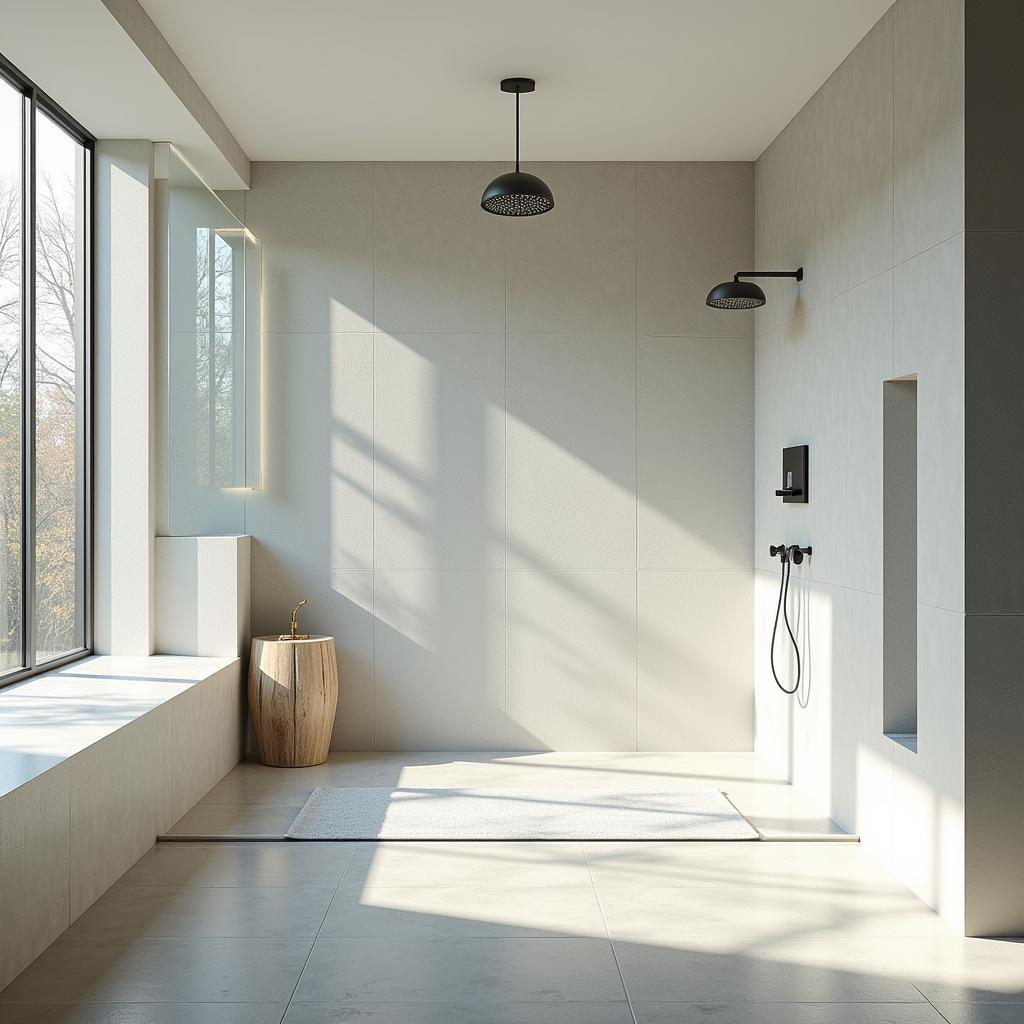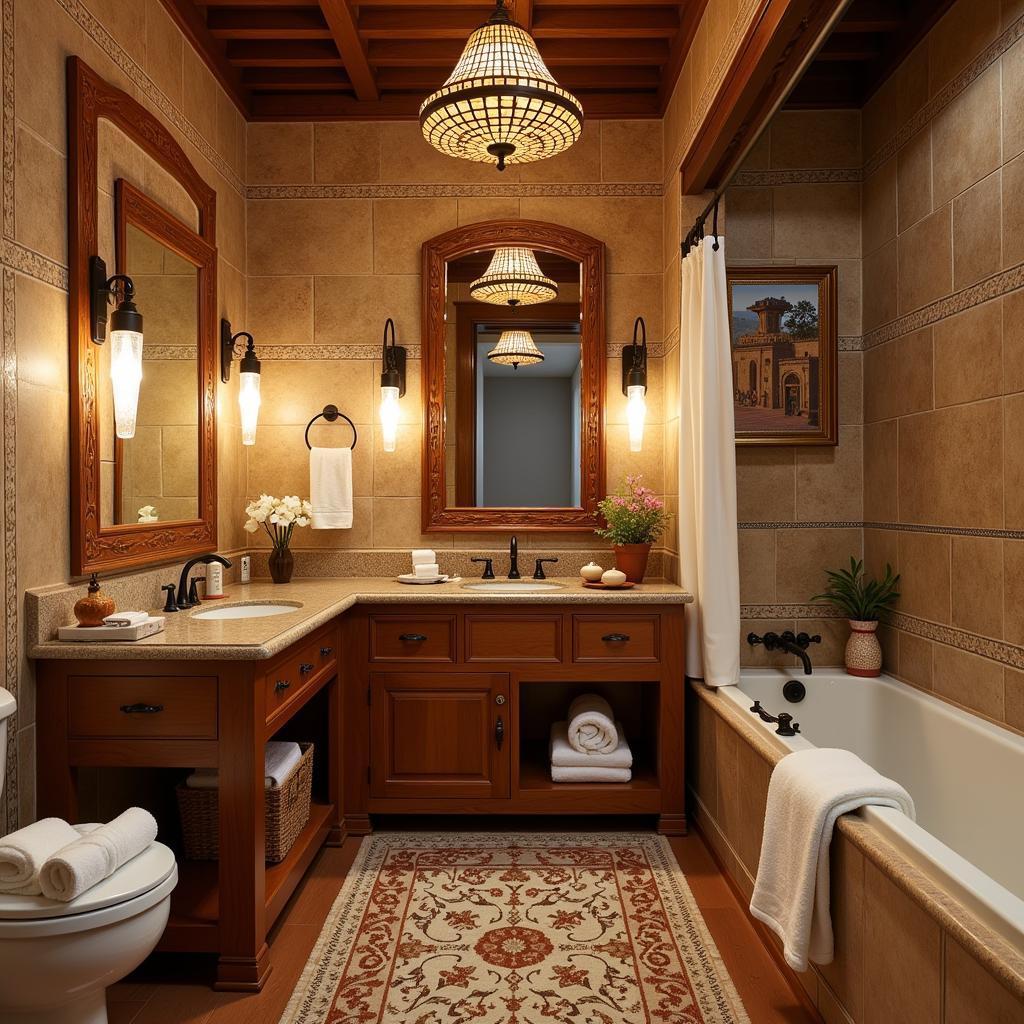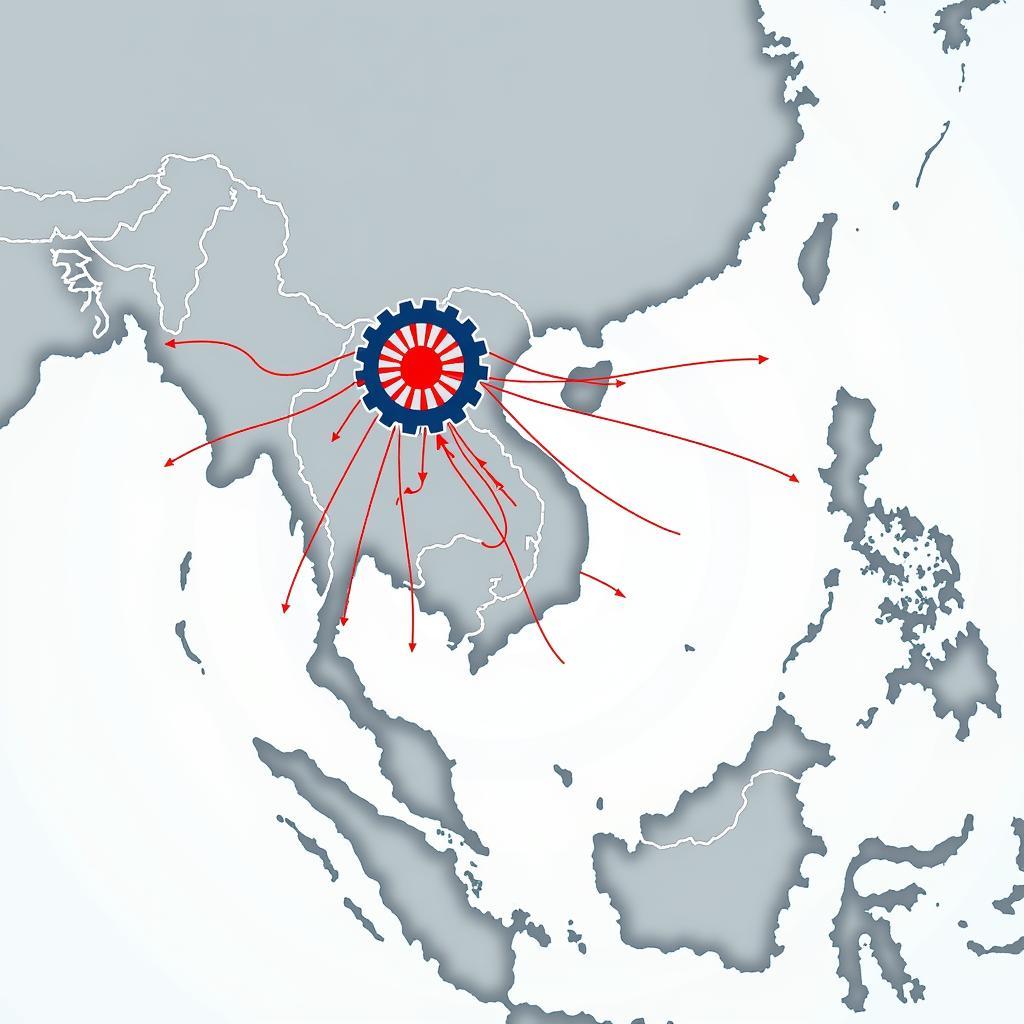ASEAN bathrooms offer a fascinating blend of practicality and cultural influences. From minimalist wet rooms to intricately designed spaces with traditional elements, they reflect the region’s diverse heritage and modern sensibilities. This exploration delves into the unique characteristics of ASEAN bathrooms, providing insights into their design, functionalities, and regional variations.
Embracing the Wet Room Concept
One of the defining features of many ASEAN bathrooms is the prevalence of wet rooms. Unlike Western bathrooms with separate areas for showering and toileting, wet rooms seamlessly integrate these functions. This design stems from the region’s tropical climate, where a quick rinse is often preferred throughout the day.
 Modern Wet Room Design in ASEAN
Modern Wet Room Design in ASEAN
Wet rooms offer several advantages, including:
- Space optimization: By eliminating the need for separate shower enclosures, wet rooms maximize space, particularly beneficial in smaller homes.
- Ease of cleaning: The continuous floor surface allows for easy cleaning and maintenance.
- Accessibility: The open layout enhances accessibility for individuals with mobility challenges.
Blending Traditional and Modern Aesthetics
ASEAN bathrooms showcase a captivating fusion of traditional and modern design elements. While contemporary fixtures and finishes are prevalent, traditional influences are often incorporated to create a unique ambiance.
 Traditional Elements in ASEAN Bathroom Decor
Traditional Elements in ASEAN Bathroom Decor
Some examples of this harmonious blend include:
- Natural materials: The use of materials like bamboo, wood, and natural stone adds warmth and a touch of local craftsmanship to the bathroom.
- Traditional patterns: Incorporating traditional motifs and patterns in tiles, fabrics, or decorative elements injects a sense of cultural identity.
- Open-air concepts: Inspired by traditional homes, some modern bathrooms feature open-air showers or courtyards, blurring the lines between indoor and outdoor spaces.
Regional Variations and Cultural Influences
While certain features are common across ASEAN bathrooms, regional variations and cultural influences add distinct characteristics.
Minimalist Elegance in Singapore and Malaysia
Bathrooms in Singapore and Malaysia often exhibit a minimalist and modern aesthetic. Clean lines, neutral color palettes, and a focus on functionality are key design principles. High-quality fixtures and innovative storage solutions are prioritized to maximize space utilization.
Tropical Tranquility in Thailand and Indonesia
In Thailand and Indonesia, bathrooms often evoke a sense of tropical tranquility. Natural materials, vibrant colors, and open-air concepts are prevalent. Outdoor showers surrounded by lush greenery provide a refreshing and immersive experience.
Colonial Charm in Vietnam and the Philippines
Bathrooms in Vietnam and the Philippines often reflect a blend of colonial and indigenous influences. Vintage-inspired fixtures, pastel color palettes, and intricate tilework are common features. The use of Capiz shells, a traditional material in the Philippines, adds a unique and elegant touch.
FAQs about ASEAN Bathrooms
Q: Are all ASEAN bathrooms wet rooms?
A: While wet rooms are common, not all ASEAN bathrooms follow this design. Modern apartments and houses may feature separate shower enclosures.
Q: What are some popular materials used in ASEAN bathrooms?
A: Common materials include ceramic tiles, natural stone, bamboo, wood, and concrete.
Q: How can I incorporate ASEAN design elements into my bathroom?
A: Consider using natural materials, incorporating traditional patterns, or adding plants to create a tropical vibe.
Seeking More Inspiration?
For further exploration of ASEAN interior design and inspiring bathroom ideas, visit:
Need Assistance with Your ASEAN-Inspired Bathroom?
Contact us at Phone Number: 0369020373, Email: aseanmediadirectory@gmail.com or visit our office located at Thon Ngoc Lien, Hiep Hoa, Bac Giang, Vietnam. Our customer support team is available 24/7 to assist you.

